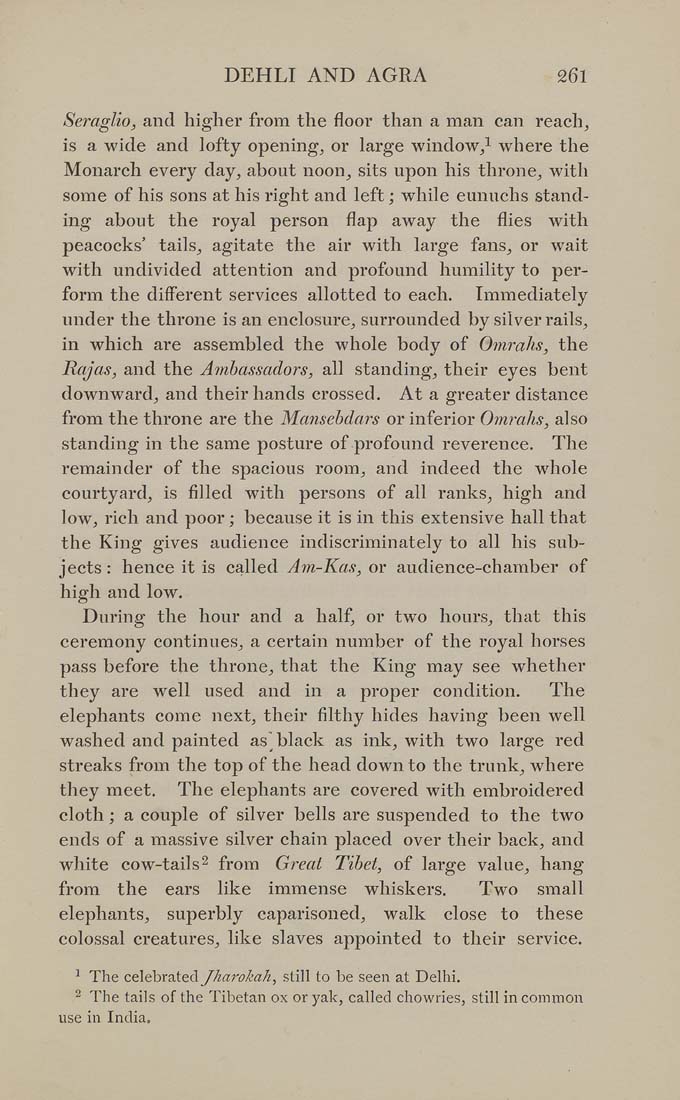DEHLI AND AGRA 26l
Seraglio, and higher from the floor than a man can reach,
is a wide and lofty opening, or large window,'^ where the
Monarch every day, about noon, sits upon his throne, with
some of his sons at his right and left; while eunuchs stand¬
ing about the royal person flap away the flies with
peacocks' tails, agitate the air with large fans, or wait
with undivided attention and profound humility to per¬
form the different services allotted to each. Immediately
under the throne is an enclosure, surrounded by silver rails,
in which are assembled the whole body of Omrahs, the
Rajas, and the Ambassadors, all standing, their eyes bent
downward, and their hands crossed. At a greater distance
from the throne are the Mansebdars or inferior Omrahs, also
standing in the same posture of profound reverence. The
remainder of the spacious room, and indeed the whole
courtyard, is filled with persons of all ranks, high and
low, rich and poor; because it is in this extensive hall that
the King gives audience indiscriminately to all his sub¬
jects : hence it is called Am-Kas, or audience-chamber of
high and low.
During the hour and a half, or two hours, that this
ceremony continues, a certain number of the royal horses
pass before the throne, that the King may see whether
they are well used and in a proper condition. The
elephants come next, their filthy hides having been well
washed and painted as"_ black as ink, with two large red
streaks from the top of the head down to the trunk, where
they meet. The elephants are covered with embroidered
cloth; a couple of silver bells are suspended to the two
ends of a massive silver chain placed over their back, and
white cow-tails^ from Great Tibet, of large value, hang
from the ears like immense whiskers. Two small
elephants, superbly caparisoned, walk close to these
colossal creatures, like slaves appointed to their service.
^ The celebratedy/zaraX'^/^, still to be seen at Delhi.
^ The tails of the Tibetan ox or yak, called chowries, still in common
use in India.
|








